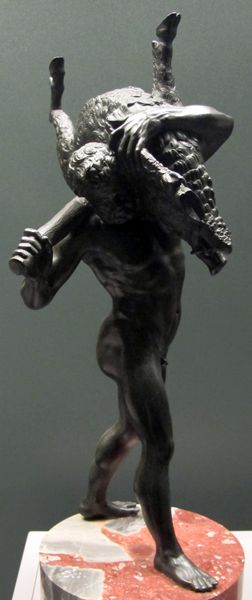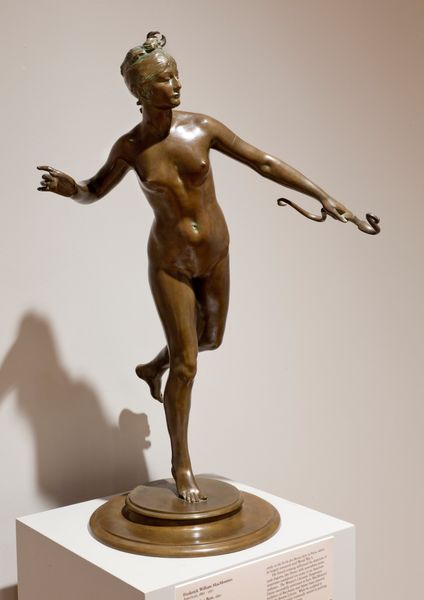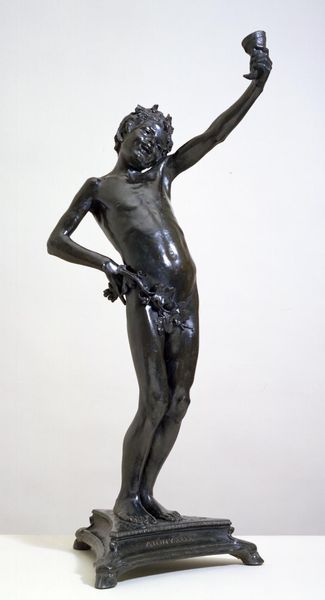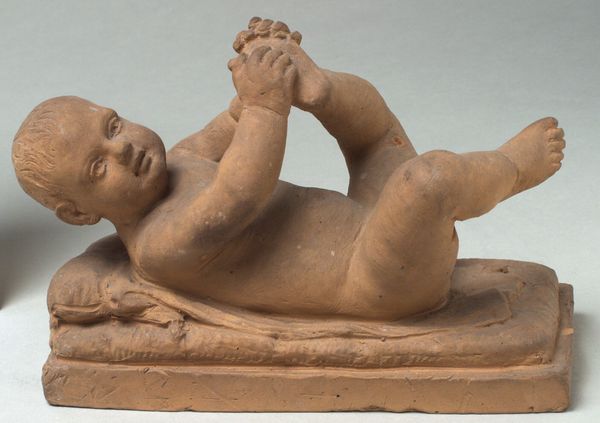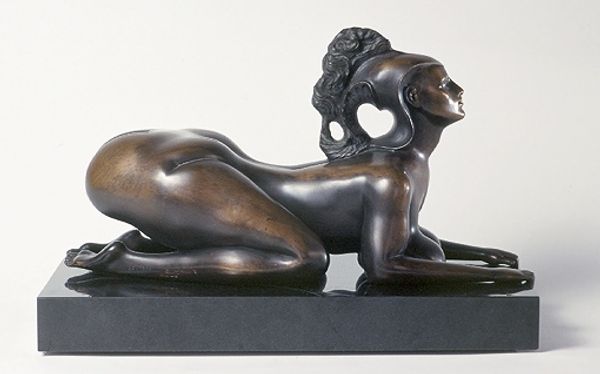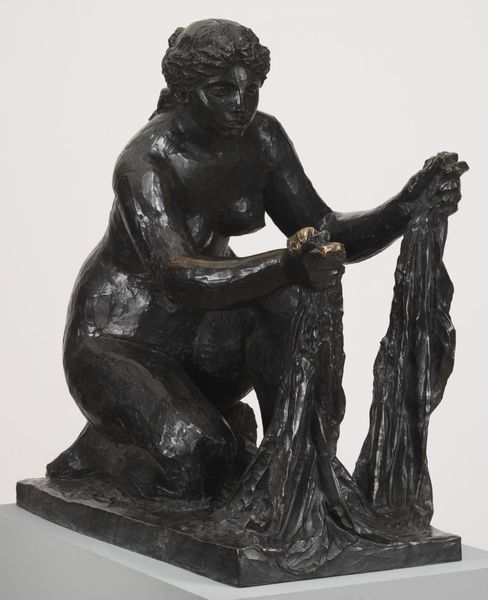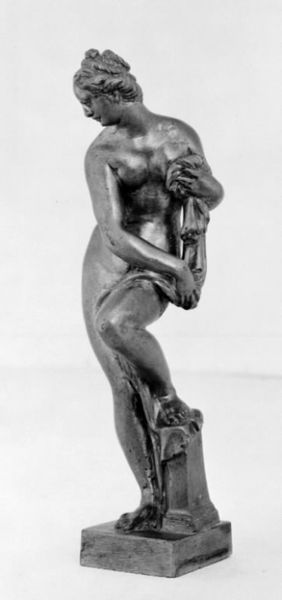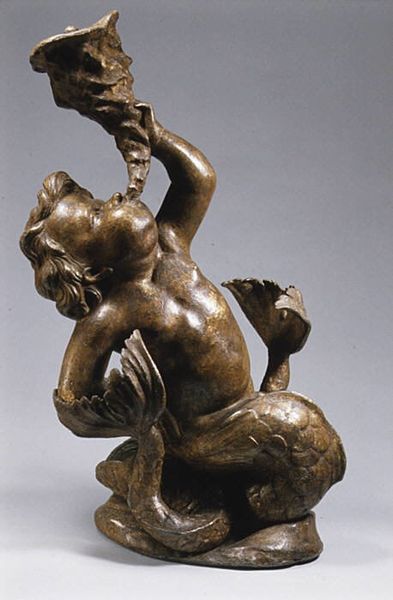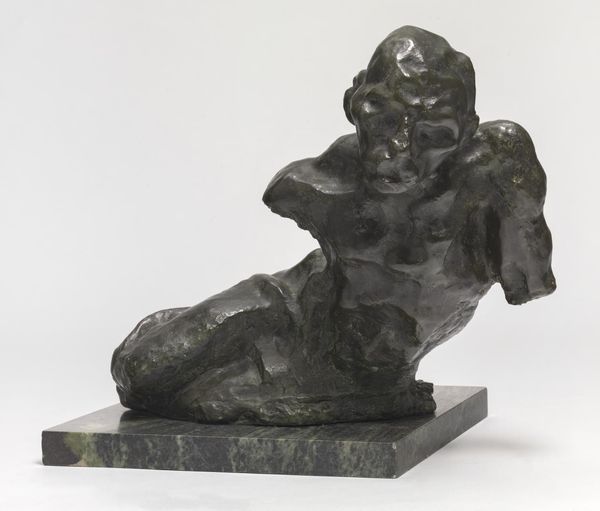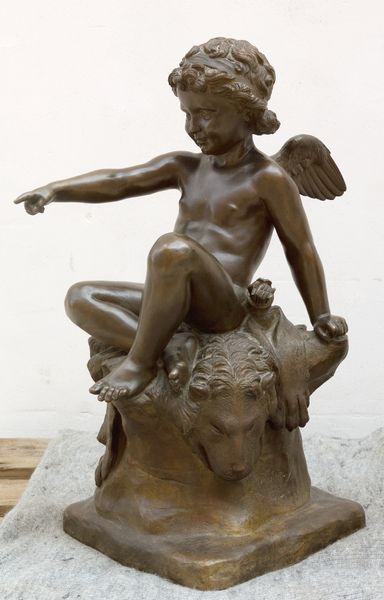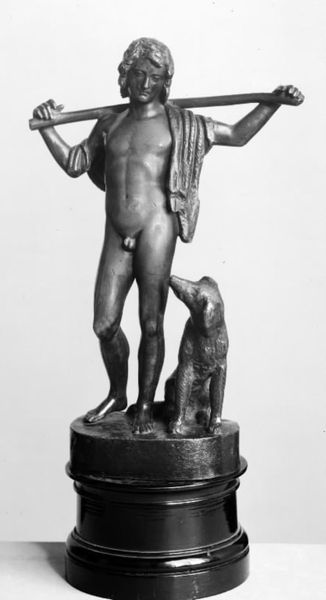
carving, bronze, sculpture
#
portrait
#
statue
#
carving
#
sculpture
#
classical-realism
#
bronze
#
figuration
#
11_renaissance
#
sculpture
#
italian-renaissance
#
statue
Copyright: Public domain
Curator: Allow me to introduce you to Giambologna’s bronze sculpture, “putti dalla cappella grimaldi in s. francesco di castelletto,” created around 1590. What strikes you first? Editor: Well, it's certainly not the angelic innocence I expected. There’s a weightiness, a grounded quality to the figure. The bronze lends it a sense of earthly materiality, a far cry from ethereal ideals. Curator: That’s perceptive. It's a portrait of childhood as real, rather than ideal. Notice how the bronze gives warmth to the cherubic form. The Renaissance was, in part, about rediscovering humanity, even in the divine. I see vulnerability. What sort of labor would be involved to work with bronze in the 16th century? Editor: Immense amounts of it, particularly hard physical labor involving the mining, transport, smelting, and casting of metals by numerous individuals: bronze casting was rarely an individual act but required entire workshops devoted to the extraction and deployment of mineral resources for the elite. Also note the delicate carving required afterwards to complete this piece! Curator: Exactly! It's interesting to consider the value ascribed to the material itself, beyond its transformation into art. A raw bronze piece suggests power and industrial capability, not spirituality. But with care it becomes "art", that which touches the soul. Editor: Right. By tracing the labor that creates this object, one understands it is much more than simply a cherubic figure rendered in classical realism; there’s complex production networks in operation, obscured perhaps through the easy classification of Giambologna as solely an "artist." Curator: That makes you consider a bit what all these systems cost. From that point of view the beauty of Renaissance art could inspire deep admiration, perhaps, or bitterness for someone involved only with material sourcing! Thanks for highlighting some of this context; what are you left with? Editor: I'm thinking about what other meanings we impose or subtract from this bronze beyond material origins. In a time defined by inequality, labor exploitation can be aestheticized as art, ultimately masking realities of human toil behind symbols of wealth. Curator: So interesting! For me I realize it's both earthy *and* divine, a perfect balance, at least momentarily, struck in the alchemic meeting of humanity and art!
Comments
No comments
Be the first to comment and join the conversation on the ultimate creative platform.

